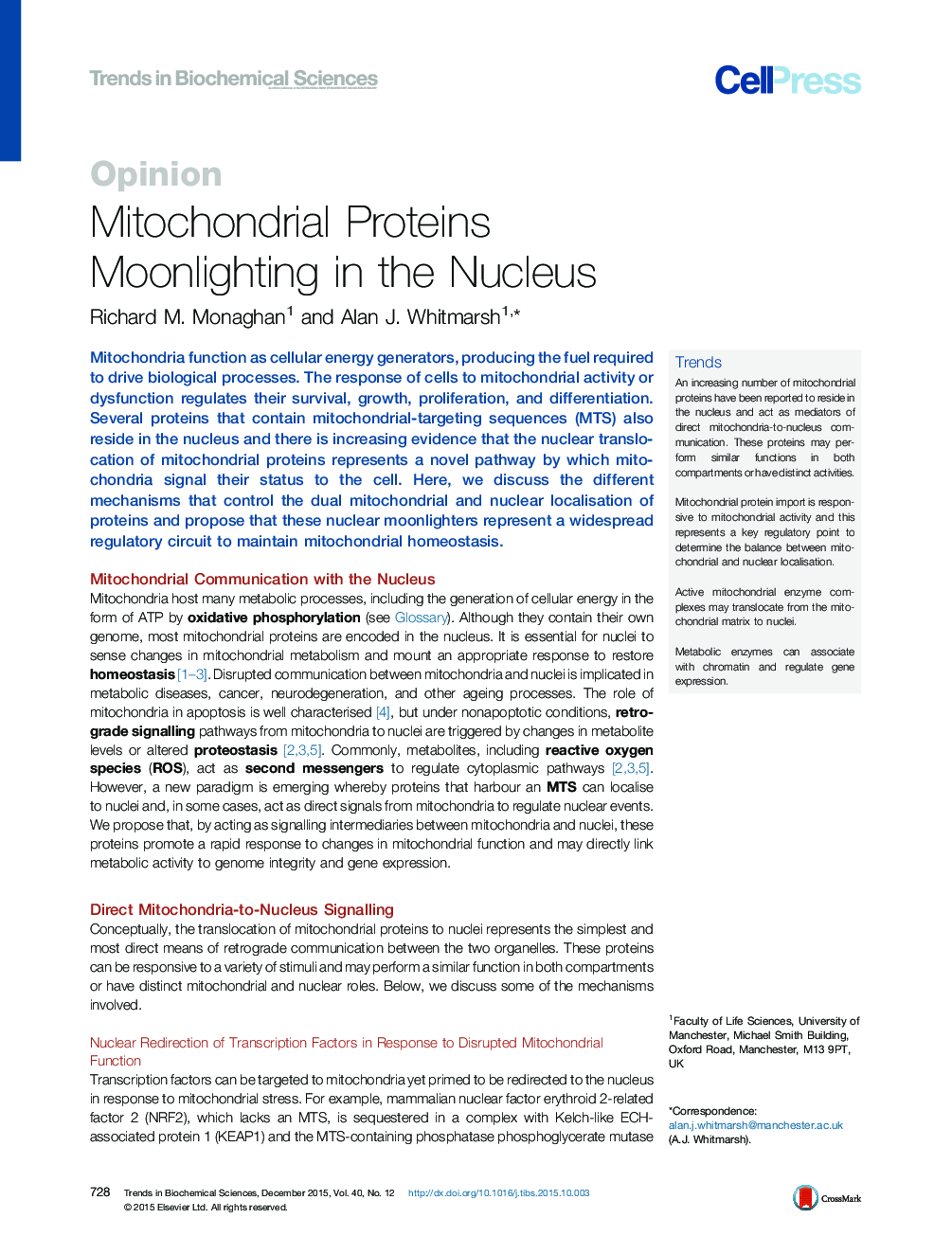| Article ID | Journal | Published Year | Pages | File Type |
|---|---|---|---|---|
| 2030499 | Trends in Biochemical Sciences | 2015 | 8 Pages |
Mitochondria function as cellular energy generators, producing the fuel required to drive biological processes. The response of cells to mitochondrial activity or dysfunction regulates their survival, growth, proliferation, and differentiation. Several proteins that contain mitochondrial-targeting sequences (MTS) also reside in the nucleus and there is increasing evidence that the nuclear translocation of mitochondrial proteins represents a novel pathway by which mitochondria signal their status to the cell. Here, we discuss the different mechanisms that control the dual mitochondrial and nuclear localisation of proteins and propose that these nuclear moonlighters represent a widespread regulatory circuit to maintain mitochondrial homeostasis.
TrendsAn increasing number of mitochondrial proteins have been reported to reside in the nucleus and act as mediators of direct mitochondria-to-nucleus communication. These proteins may perform similar functions in both compartments or have distinct activities.Mitochondrial protein import is responsive to mitochondrial activity and this represents a key regulatory point to determine the balance between mitochondrial and nuclear localisation.Active mitochondrial enzyme complexes may translocate from the mitochondrial matrix to nuclei.Metabolic enzymes can associate with chromatin and regulate gene expression.
